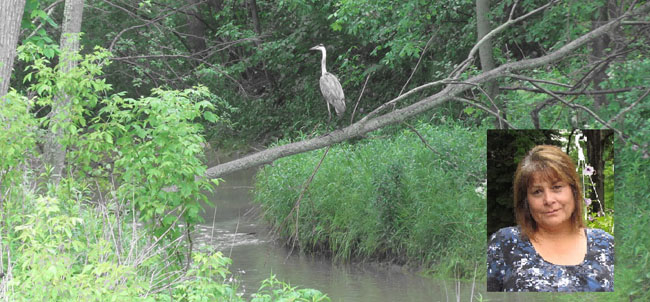Aamjiwnaang wary of new environmental report

By Greg Plain
Aamjiwnaang First Nation citizens are not supporting the report released recently by the Ontario Ministry of the Environment where it has concluded that Talfourd Creek that runs the First Nation is safe to use for “recreation”.
Various contaminants in the water and sediment gave Aamjiwnaang reason enough to place signs up throughout the Territory where children might have access to the waterway. The Signs adorn skull and crossbones warning would-be-swimmers to keep out.
While the Band Council is not taking the signs down as yet the Community will be advised of the report and be advised what the clearance of the stream would mean.
“We were pleased with the findings. We have peace of mind knowing that those who do utilize the creek should be able to do so in a safe manner,” said Aamjiwnaang Chief Chris Plain.
He added that he supports changing the language on the signs, but that the signs will stay up until the First Nation has a chance to share and get feedback on the report from the community.
Aamjiwnaag Band Council spoke with the Province of Ontario and Health Canada, in 2012 they requested a study be done on the waterway and sediment to see what in fact is in the creek that travels through the Territory.
Provincial scientists in the studies have shown six contaminants in Talfourd Creek: cadmium, manganese, and titanium, which are heavy metals; polycyclic aromatic hydrocarbons (PAHs), found in crude oil; octachlorostyrene; and 2,6-dicholorobenzyol chloride, two chemicals used in a variety of industries in the area.
According to the Ministries records and studies the contaminants in the creek are now at acceptable levels that those Aamjiwnaang citizens playing around the creek.
Ada Lockridge has been an environmental activist in Aamjiwnaang for many years and she too is skeptical of the report’s findings. She accompanied ministry scientists as they collected data on several occasions.
“I just really hope it will eventually be clean. Maybe many of the contaminants did all wash away, I really don’t know,” said Lockridge. “But for me, red flags go up, so I don’t believe it myself.”
The Ministry of the Environment will continue to monitor the creek for sediment and water quality, as well as fish health, which was not included in this report.
Chief Plain said “This report was able to bring – I’m not going to say closure – but some answers with data to support it, we can now report that back to the community.”


